Greetings,
Dear friends I hope you are all very well, sometimes among so many things we forget the basics and the richness of an artisan product, either for lack of time, comfort, etc..
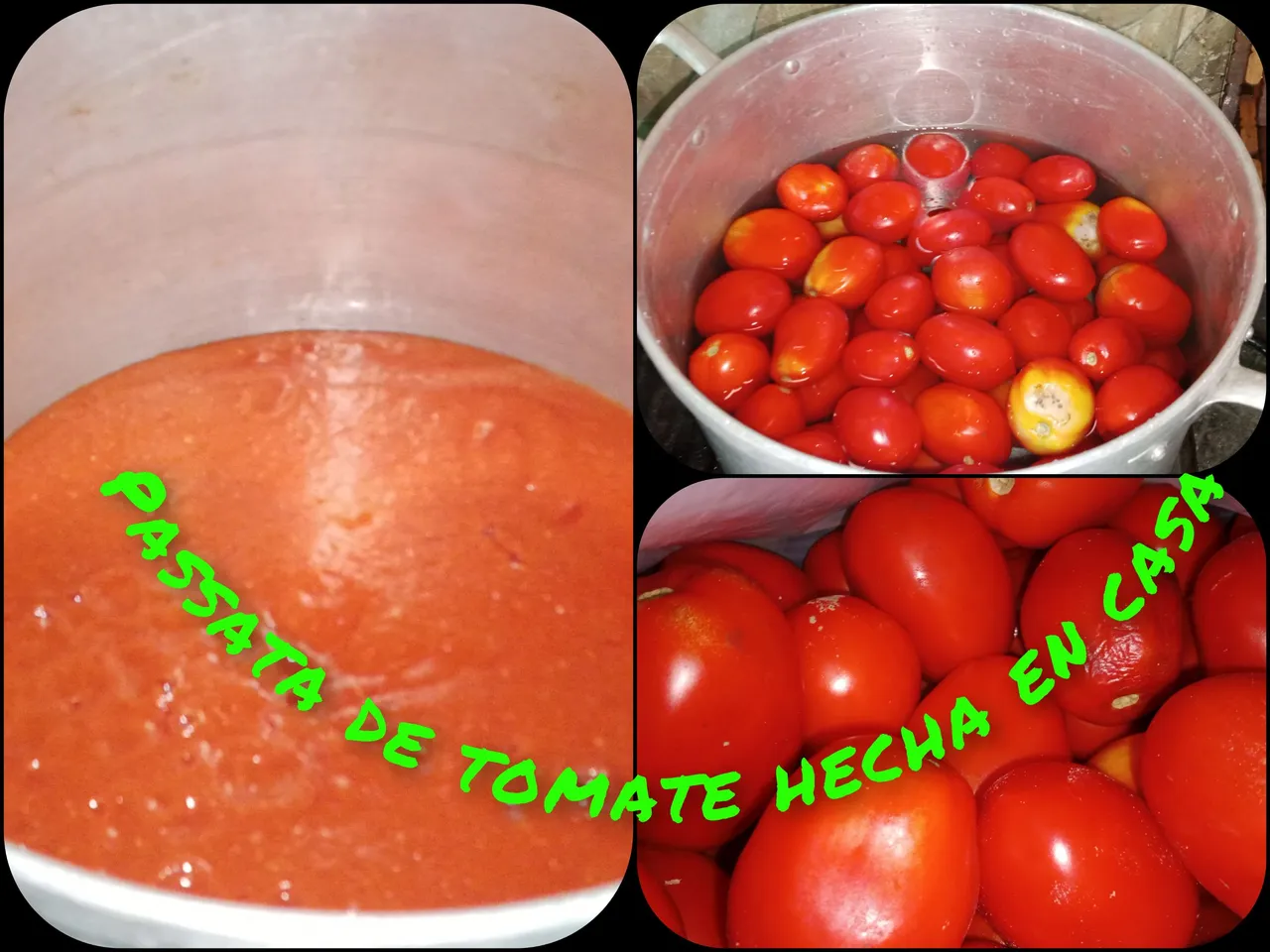
In this opportunity I come to share with you my way of preparing a rich tomato passata that will be the base of multiple preparations in our kitchen.
In Venezuela my country for these months of the year the summer comes alive and the tomato is one of the seasonal fruits that abound in crops and shelves with extremely low prices, which is why I decided to prepare a few liters of sauce to have on hand in order to save a little.
As many already know the passata is a tomato paste or puree that serves as a base for multiple sauces such as Neapolitan, Bolognese, pizza and others; the way to prepare it is very simple but it does require a little time to prepare it.
The first thing we need is to have very but very ripe tomatoes so that our pasatta reaches that intense red color that characterizes it.
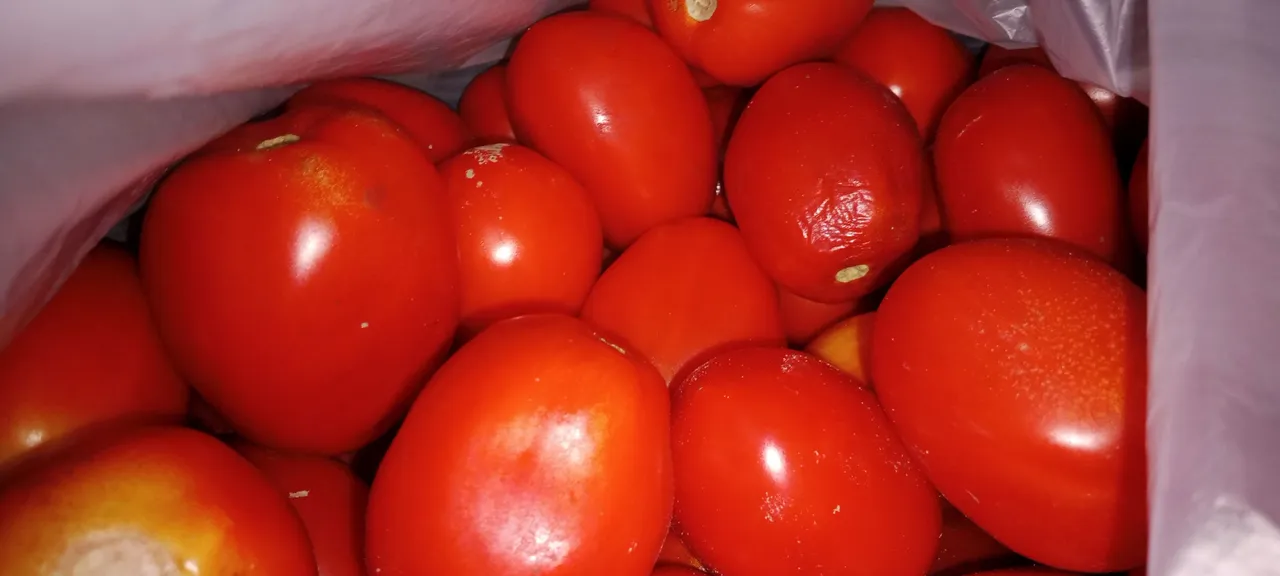
Once we have the amount of tomatoes we are going to use, we proceed to wash them and then cook them in a pot with plenty of water.

Once we have our tomatoes cooked we remove them from the hot water and wait for them to cool down to proceed to remove the shell because if we leave it it alters the flavor of our passata and accelerates the decomposition.
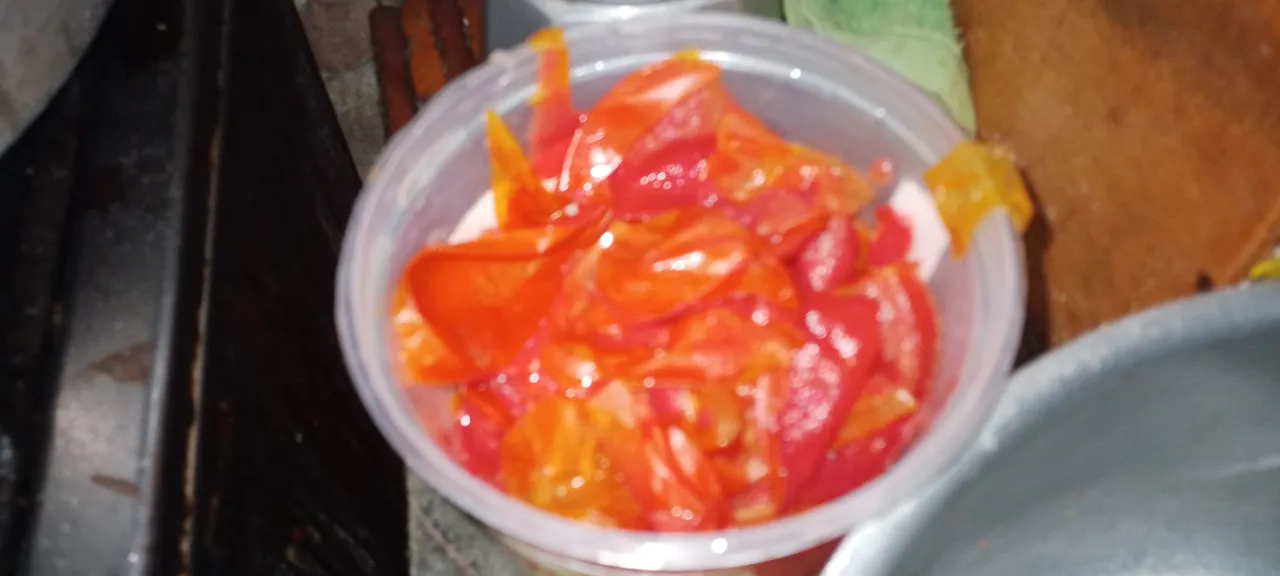
The next step is to proceed to crush our tomatoes, for this step there are several ways to do it, you can blend them, you can grind them directly in the pot, you can grind them in a strainer; for me the most practical is to blend and strain or grind in the strainer because this way our pasatta is seedless.
After we have all our pulp crushed we return with the pot to the fire to extract all the water that remains in our pulp.
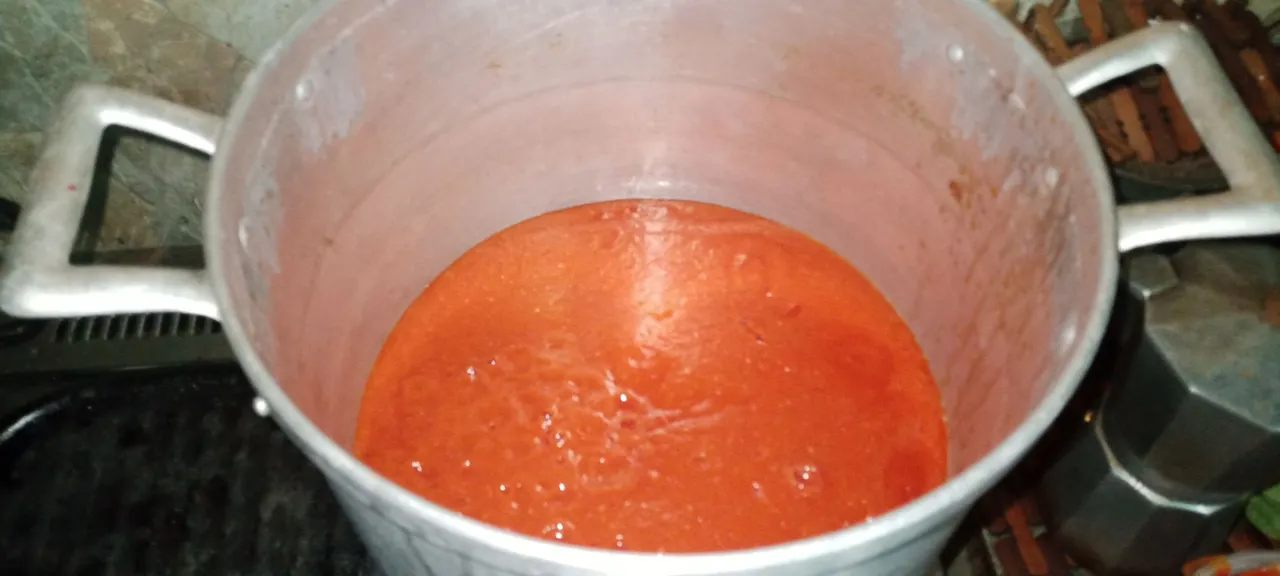
We are going to cook as I told you until it is quite dense below I leave you a sample of how the cooking looks like when our passata is ready.
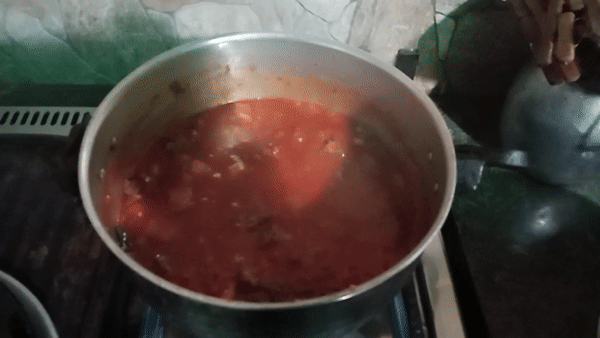
If we prepare enough we can recycle the glass containers such as mayonnaise, with the container well washed and dry add hot passata and fill the container completely and cover and let stand and do not uncover more until it is to be used.
I learned this preparation from a friend of mine who every year as a tradition takes advantage of the lowest price of tomatoes and prepares enough to cover her needs throughout the year, it is a technique of saving and planning that I have not yet mastered but I find it quite interesting.
I hope this preparation will be of great use to you and that you can make the most of it.
Thank you for joining me and may God bless you greatly.
The photos are my own taken with the Infinix Hot 10i cell phone.
The gif was created with the gif creator app and some images were edited with the incollage app.
Translated with www.DeepL.com/Translator (free version)
SPANISH
Saludos,
Queridos amigos espero todos estén muy bien, aveces entre tantas cosas nos olvidamos de lo básico y de lo rico que es un producto artesanal, ya sea por falta de tiempo, de comodidad, etc.
En esta oportunidad les vengo a compartir mi forma de preparar una rica passata de tomate quien será la base de múltiples preparaciones en nuestra cocina.
En Venezuela mi país para estos meses del año el verano cobra vida y el tomate es uno de los frutos de temporada que más abunda en siembras y anaqueles con precios sumamente bajos, es por eso que me animé en forma de ahorrar un poco a preparar unos cuantos litros de salsa para tener a la mano.
Cómo ya muchos saben la passata es una pasta o puré de tomate que nos sirve de base para múltiples salsas como napolitana, boloñesa, para pizza entre otras; la forma de prepararla es muy sencilla pero si requiere de un poco de tiempo prepararla.
Lo primero que necesitamos es tener tomates muy pero muy maduros para que nuestra passata alcance ese color rojo intenso que la caracteriza.

Al tener ya la cantidad de tomates que vamos a utilizar procedemos a lavarlos para luego cocinarlos en una olla con abundante agua.

Una vez tengamos nuestros tomates cocidos retiramos del agua caliente y esperamos que se enfríen para proceder a retirar la concha ya que si la dejamos altera el sabor de nuestra passata y acelera la descomposición.

El siguiente paso es proceder a triturar nuestros tomates, para este paso hay varias maneras de hacerlo, los puedes licuar, los puedes triturar directo en la olla, los puedes triturar en un colador; para mí las que más práctico son la de licuar y colar o la de triturar en el colador porque así nuestra pasatta queda sin semillas.
Después que tenemos toda nuestra pulpa triturada volvemos con la olla al fuego para extraer toda el agua que queda en nuestra pulpa.

Vamos a cocinar como ya les dije hasta que esté bastante densa abajo les dejo una muestra de como se ve la cocción cuando ya está lista nuestra passata.

Si preparamos suficiente podemos reciclar los envases de vidrio como los de mayonesa, con el envase bien lavado y seco agregamos pasatta bien caliente y llenamos el envase por completo y tapamos dejamos reposar y no destapamos más hasta que se vaya a utilizar.
Está preparación la aprendí de una amiga quien todos los años como tradición aprovecha el precio más bajo del tomate y prepara la cantidad suficiente para cubrir sus necesidades durante todo el año, es una técnica de ahorro y planificación que aún no logro dominar pero si me resulta bastante interesante.
Espero esta preparación les sea de gran utilidad y que puedan sacar el mejor de los provechos.
Gracias por acompañarme que Dios les bendiga grandemente.
Las fotos son de mi propiedad tomadas con el celular Infinix Hot 10i.
El gif fue creado con la app creador de gif y algunas imágenes fueron editadas con la app incollage.
